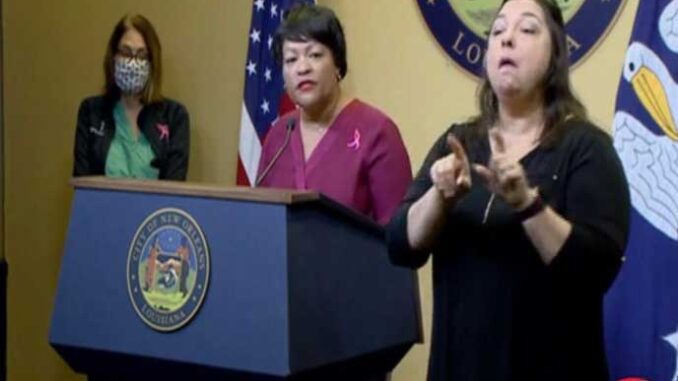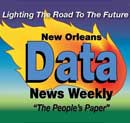
Kaleb Crump Data News Weekly Contributor
Mayor LaToya Cantrell announced the City of New Orleans will begin the loosening of COVID-19 restrictions by moving into a multi-layered Phase 3 reopening that started on Oct. 3rd. This comes just three weeks after Cantrell faced backlash for firmly resisting moving Orleans Parish from Phase 2, along with the rest of the state. There are now less than 50 new COVID-19 cases a day in Orleans Parish, according to the latest health data from the state.
“We have flattened the curve and slowed down the spread of this virus significantly,” said Cantrell in her press conference on Oct. 1st, about the city entering Phase 3.
“We’ll continue to be safe while really making sure we balance our economic recovery. With all of these phases the City of New Orleans has taken a different approach than the State of Louisiana and we will continue on that path,” Cantrell said.
The City has now entered Phase 3.1. This means:
• There will be an increase in restaurant capacity to 75-percent indoors and 100-percent outdoors.
• Entertainment crowds indoors will be from 25 people to 50 people.
• Outdoor event capacity will return to 100-percent.
• Bars will be allowed to sell drinks to go.
• Salons and other businesses are allowed to increase to 75-percent capacity.
• Social distancing and masks will still be required throughout the entire phase 3.
• Phase 3.2 is the next phase and an announcement could come as early as Oct. 15th.
Residents said they remained concerned about what fewer restrictions could mean for the spread of the virus.
“I feel hesitant about it because I know moving into Phase 3 people will feel as if things can go back to normal meaning being in large groups and not wearing masks,” said Da’Saia Dequair, a Treme’ resident who works at Starbucks.
Dequair said she felt some residents pressured the mayor into moving out of Phase 2 along with other parishes across the state. “I also believe Mayor Cantrell might feel a little forced to go into Phase 3 because of all the negative backlash that she received when she decided to keep NOLA in Phase 2 while the rest of the states moved on,” Dequair said.
She hopes that, at the very least, a new phase may help some tourist industries hurt by the restrictions and encourage people to visit the city.
“I think moving into Phase 3 will affect tourism tremendously, New Orleans was already known for bringing in different kinds of people from all over the world to come and embrace our culture, so I think hearing New Orleans is in Phase 3 will persuade a huge number of people to come visit,” Dequair said.
Over 74-percent of COVID-19 deaths in Orleans Parish have been African Americans while they have only made up 54-percent of positive cases. Positivity rates among the Hispanic community have been consistently three times higher than other demographics and in September was at 11-percent. Not only have Black and Hispanic communities experienced more cases of COVID-19 and had worse health outcomes, they have also been more likely to be affected economically, according to city data.
“We started as probably the fast growing national hotspot, but thanks to the swift action of our mayor and residents we slowed the spread early on in a way that few other communities have done,” said Dr. Jennifer Avegno at the Phase 3 press conference. Avegno is the head of the News Orleans Health Department.
“After a little bump as the mayor mentioned in our initial Phase 2 opening, we were able to zero in on those activities responsible for some of that spread and pull back as we needed to,” Avegno explained about the slow pace of reopening. “Since mid-summer, we’ve been very successful in maintaining our low case numbers with the specific primary goal of getting kids back in the classroom safety,” Avegno said.
The 12,672 New Orleanians who contracted the virus and the 587 who have died since March 9, 2020, is still a recent reminder for most residents about how deadly the virus still can be.
“Honestly, I don’t think we are ready to move into Phase 3 so soon. I believe Mayor Cantrell’s being forced into moving into Phase 3 because people are tired of the mask policy or not being able to go out to parties anymore,” said Mid-City resident Jammal Gibson, who works at a Walmart.
“With everything that’s going on in New Orleans, I think having tourists would just make things worse. I say this because why would we expect people to visit and listen to our policies if the majority of the people that live here don’t listen to them,” Gibson said.
Recommended For You.

Edwin Buggage Editor-in-Chief Data News Weekly
National Urban League: Leading the Struggle for Democracy
In these perilous times, where the future


Be the first to comment